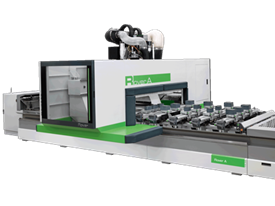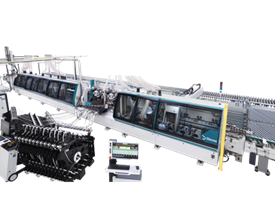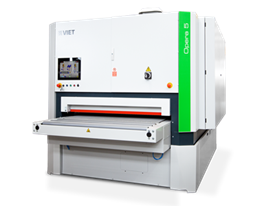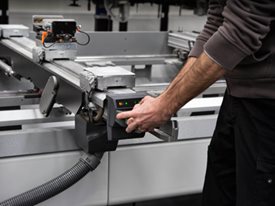Furniture was simple to buy in the past. You went shopping, made a decision on what you wanted, and bought it. Today, however, consumers have a lot more options, and there is more rivalry amongst enterprises.
Additionally, as a result of rising commodity prices and higher transportation costs brought on by the price of oil reaching record highs, the cost of producing average-grade furniture has grown.
These elements have altered how businesses conduct themselves to stay profitable and competitive, which gives rise to a lot of manufacturing problems that companies face.
The following is a list of the main challenges in manufacturing industry that today's manufacturers must address:
Top Manufacturing Problems Faced by Industries
1) The increased rivalry between retailersAs previously noted, this is one of the most common manufacturing problems companies face as buyers now have more options to choose from when buying furniture. This means that to attract customers, shops must provide products of higher quality or at a lower price. For its affordable furnishings, businesses like Ikea, Crate & Barrel, and Pottery Barn have become quite well-known.
2) Commodity costs
Because businesses in this sector sometimes purchase large amounts of materials at once, an increase in the price of a commodity has an impact on the company's overall bottom line.
For instance, all of a metal's costs will increase by around 9% if the price of the metal increases by 10%. This is because they often pay ahead for 90% of total expenditures (materials + labour) and then spread out payments for other things like energy use or transportation. Both have become much more expensive in recent years.
3) Transportation
To ship their goods, several furniture companies use air freight. Since it has gotten so pricey recently, there may be problems with timing and quality control.
To avoid losing money or sales from customers who do not want items that have been damaged during delivery, businesses must now make sure that their products arrive at stores when they are intended to.
To cut storage expenses and raise labour costs for assembling and packing individual items for shipment, many businesses choose to ship their products as soon as they are manufactured as opposed to holding onto them until a significant number has accumulated.
On the other side, ocean ships are less expensive than airships since shipping by water is less expensive than shipping via the air, costing about $2,500 as opposed to $7,000 per container.
Ships must stop at numerous ports along the way, and they occasionally experience delays because of inclement weather or technical issues with the equipment on board.
As a result, the time it takes for a ship to arrive is significantly longer than it is for an aeroplane..
4) Lack of resources
Frequently, suppliers may not have enough material on hand to sell directly to manufacturers, which forces them to hold off on filling client orders until more is manufactured.
When seeking to buy directly from primary suppliers, smaller businesses are typically compelled to accept what they can obtain or pay more for fewer amounts (as opposed to going through middlemen).
Because they frequently purchase from numerous suppliers, larger businesses' orders do not receive the same level of attention as those of smaller ones when it comes to timely delivery.
5) Prolonged lead times
Long lead times for manufacturing facilities to finish products because they are overloaded with other orders is another reason that contributes to significant backlogs.
During busy times, when supplies may run low and customers are required to wait longer for their product, this can be a problem for producers.
6) Customer requestsCustomers now want greater quality and more customization options than ever before, so businesses must make improvements to their equipment and workforce training to be on the cutting edge of innovation and productivity.
Businesses can mass produce one-of-a-kind items without compromising quality thanks to new technology like CNC Machining Centers. To stay competitive, businesses must spend more money on marketing and advertising.
7) Overcapacity
Larger enterprises that seek to increase their market share but are unable to sell as many products because so many other companies are already manufacturing problems and comparable goods face a greater problem with overcapacity.
As a result, businesses experience a loss while selling their goods, which lowers the funds available for purchasing new machinery and technology. Overcapacity may be a concern for smaller businesses, but it is readily fixed by shifting production closer together or joining forces with other manufacturers to split overhead costs (i.e., rent).
8) Increasing pay
Furniture employees have been asking employers for more pay in recent years since they are struggling to make ends meet. Employers who want to draw in talent and keep it realise that they must maintain competitive pay or risk losing personnel to rival businesses. Many of these firms are forced to increase wages for every employee, which reduces the profit that can be produced on each unit of the product supplied.
9) Scarcity of funds
Banks are lending less money than they used to, which makes it harder for larger enterprises to compete with international imports whose products need local partners to advertise and sell in that region, and many businesses struggle to raise financing (i.e., South East Asia). When local business owners apply for bank loans, they frequently have trouble getting them if they don't have a list of clients who are ready to buy their items.
10) Insufficient skilled labor
Because they do not have enough personnel or enough highly qualified staff who can effectively manage a production line, many small business owners may not have a constant workflow.
Because there are so few educational institutions that offer degrees in industrial design and manufacturing sciences, it can be challenging for factory owners to locate qualified people for managerial roles.
Most persons who pursue technical trades only earn a high school diploma because parents in poor nations want their children to pursue careers as doctors, attorneys, or engineers, but larger organisations often require higher degrees for most positions (i.e., Master's Degree).
Because many young adults are more inclined to pursue an education than pursue training for a specific vocation, smaller firms also struggle to recruit qualified personnel.
Since the furniture industry is so varied, different issues can arise for various producers depending on their location and size. However, the aforementioned issues seem to be ones that all businesses, no matter how big or small, domestic or international, face.
Due to these challenges, business owners must be aware that success may take longer than anticipated to achieve. Nevertheless, success is possible with effort and tenacity.



.png)





 Worldwide
Worldwide
 Italia
Italia
 United Kingdom
United Kingdom
 Россия
Россия
 France
France
 中国
中国
 Asia
Asia
 Deutschland
Deutschland
 España
España
 Schweiz
Schweiz
 North America
North America
 India
India
 Australia & New Zealand
Australia & New Zealand
 Türkiye Cumhuriyeti
Türkiye Cumhuriyeti
 Middle East
Middle East
 Brasil
Brasil